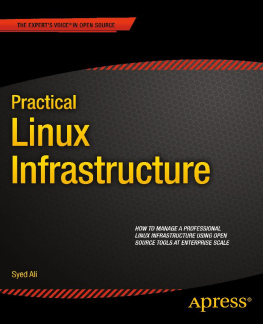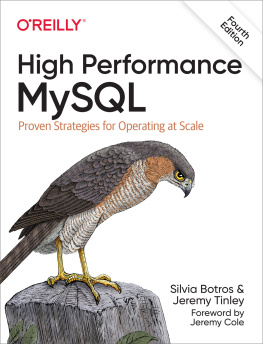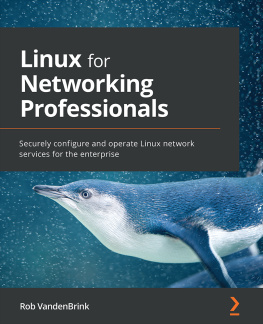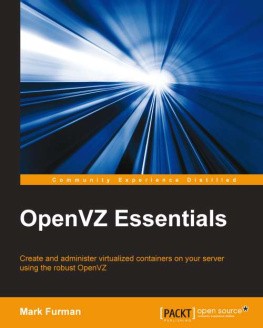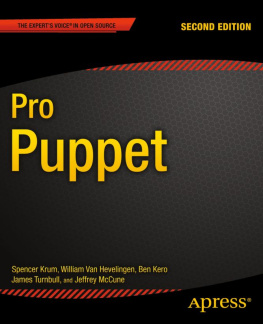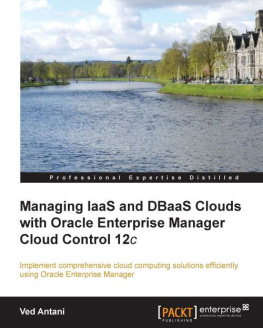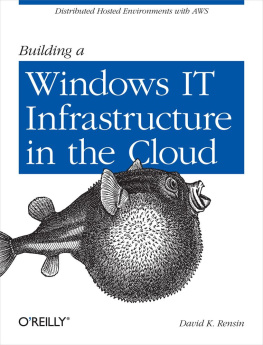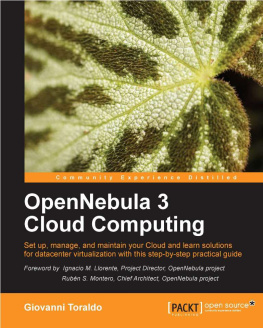Syed Ali - Practical Linux Infrastructure
Here you can read online Syed Ali - Practical Linux Infrastructure full text of the book (entire story) in english for free. Download pdf and epub, get meaning, cover and reviews about this ebook. year: 2014, publisher: Apress, genre: Computer. Description of the work, (preface) as well as reviews are available. Best literature library LitArk.com created for fans of good reading and offers a wide selection of genres:
Romance novel
Science fiction
Adventure
Detective
Science
History
Home and family
Prose
Art
Politics
Computer
Non-fiction
Religion
Business
Children
Humor
Choose a favorite category and find really read worthwhile books. Enjoy immersion in the world of imagination, feel the emotions of the characters or learn something new for yourself, make an fascinating discovery.
Practical Linux Infrastructure: summary, description and annotation
We offer to read an annotation, description, summary or preface (depends on what the author of the book "Practical Linux Infrastructure" wrote himself). If you haven't found the necessary information about the book — write in the comments, we will try to find it.
Practical Linux Infrastructure teaches you how to use the best open source tools to build a new Linux infrastructure, or alter an existing infrastructure, to ensure it stands up to enterprise-level needs. Each chapter covers a key area of implementation, with clear examples and step-by-step instructions.
Using this book, youll understand why scale matters, and what considerations you need to make. Youll see how to switch to using Google Cloud Platform for your hosted solution, how to use KVM for your virtualization, how to use Git, Postfix, and MySQL for your version control, email, and database, and how to use Puppet for your configuration management. For enterprise-level fault tolerance youll use Apache, and for load balancing and high availability, youll use HAProxy and Keepalived. For trend analysis youll learn how to use Cacti, and for notification youll use Nagios. Youll also learn how to utilize BIND to implement DNS, how to use DHCP (Dynamic Host Configuration Protocol), and how to setup remote access for your infrastructure using VPN and Iptables. You will finish by looking at the various tools you will need to troubleshoot issues that may occur with your hosted infrastructure. This includes how to use CPU, network, disk and memory management tools such as top, netstat, iostat and vmstat.
Author Syed Ali is a senior site reliability engineering manager, who has extensive experience with virtualization and Linux cloud based infrastructure. His previous experience as an entrepreneur in infrastructure computing offers him deep insight into how a business can leverage the power of Linux to their advantage. He brings his expert knowledge to this book to teach others how to perfect their Linux environments. Become a Linux infrastructure pro with Practical Linux Infrastructure today.
What youll learn- Learn how to deploy enterprise Linux infrastructure
Create networks, firewalls, load balancers
Install Postfix, Cacti, Nagios, Apache, MySQL
Using Google Cloud Platform (GCP) services
Trouble shootings tools such as top, tcpdump, iostat, vmstat
Using iptables to protect your host
Install a GIT server for source code configuration management
Use rlog for log collections
This book is ideal for Linux system administrators who are currently managing small to medium size Linux infrastructure environments and would like to learn how to manage enterprise-level infrastructures. You will be familiar with basic system administration, or site reliability engineering work, but want to learn how to build significant, pro-level Linux infrastructure.
Table of Contents- Chapter One: Managing Large Scale Infrastructure
2. Chapter Two: Hosted Cloud Solutions Using Google Cloud Platform
3. Chapter Three: Virtualization with KVM
4. Chapter Four: MySQL, Git, Postfix
5. Chapter Five: Configuration Management with Puppet
6. Chapter Six: Apache for Enterprise-level Fault Tolerance
7. Chapter Seven: Monitoring with Nagios & Trend Analysis with Cacti
8. Chapter Eight: DNS Using Bind and DHCP
9. Chapter Nine: Log Collection, OpenVPN, Iptables
10. Chapter Ten: Troubleshooting Tools
Syed Ali: author's other books
Who wrote Practical Linux Infrastructure? Find out the surname, the name of the author of the book and a list of all author's works by series.

